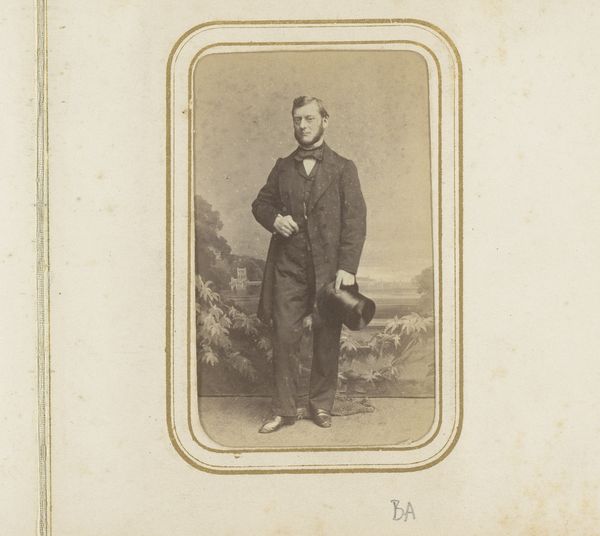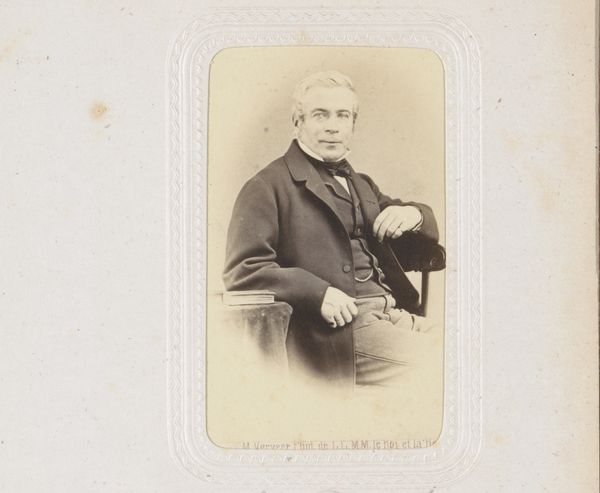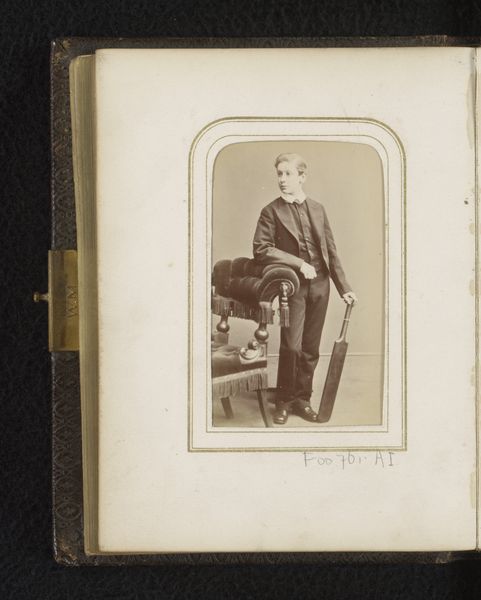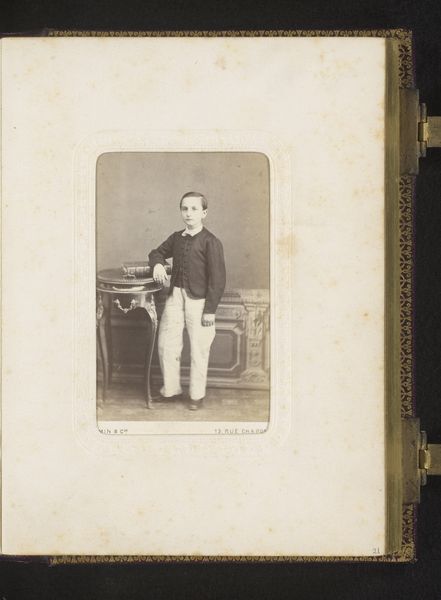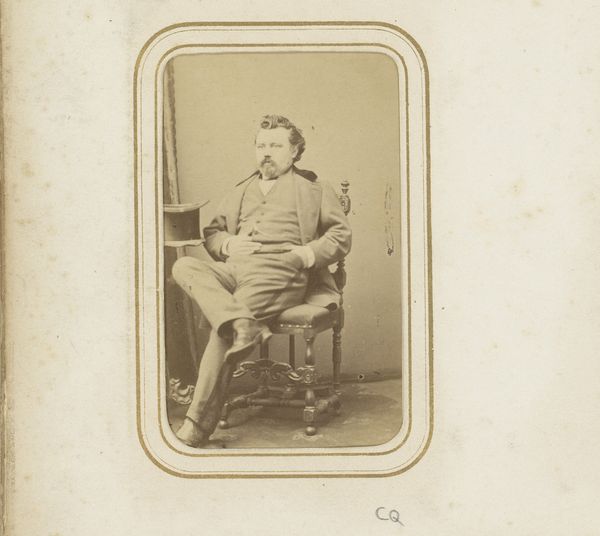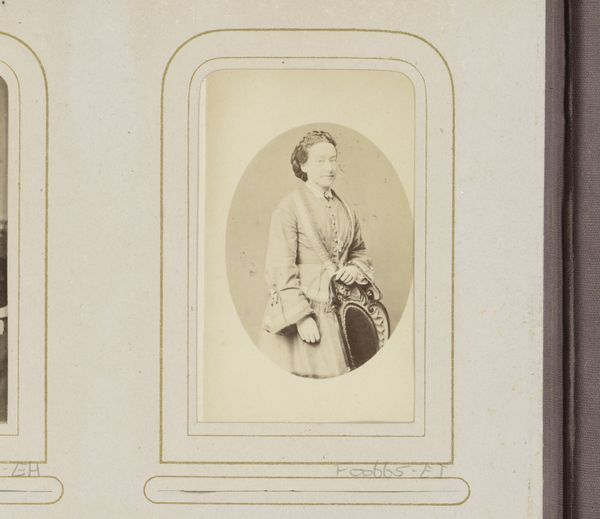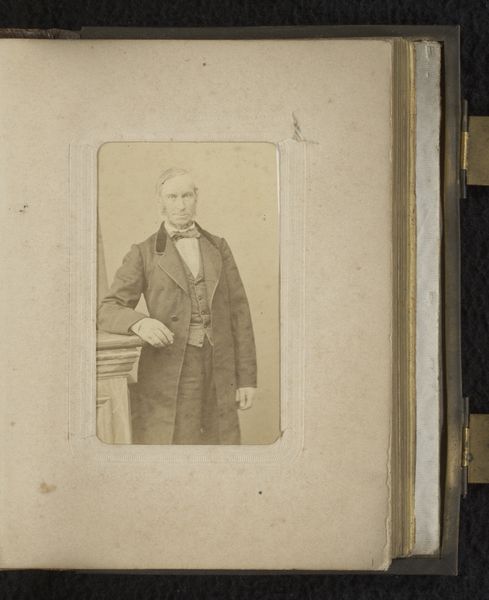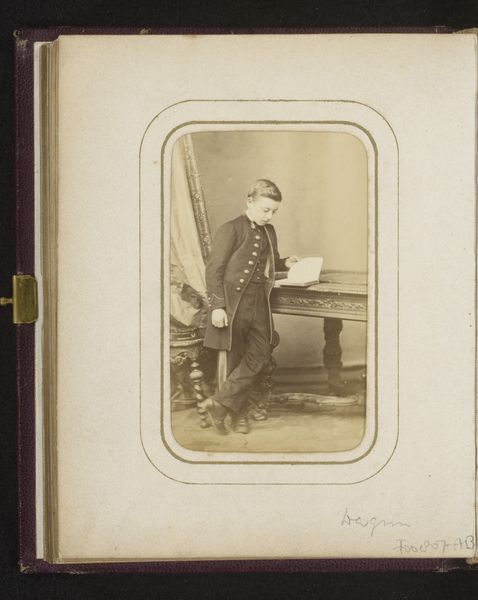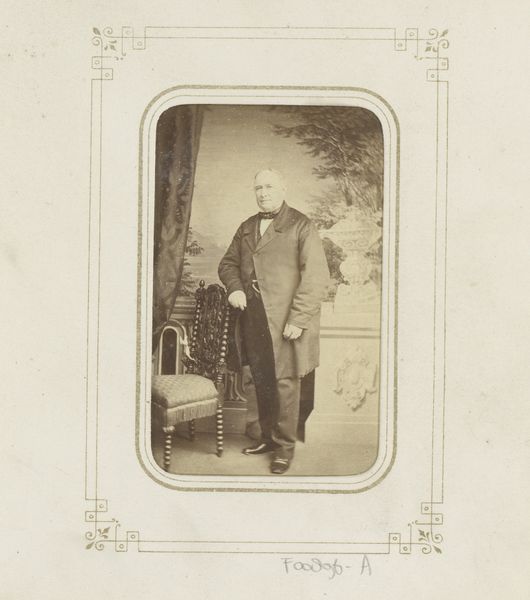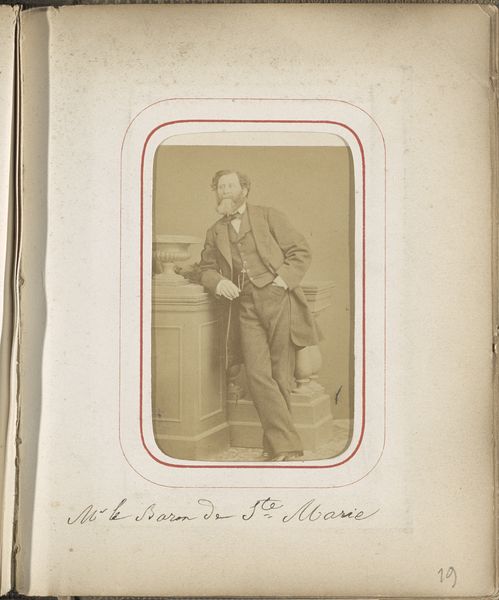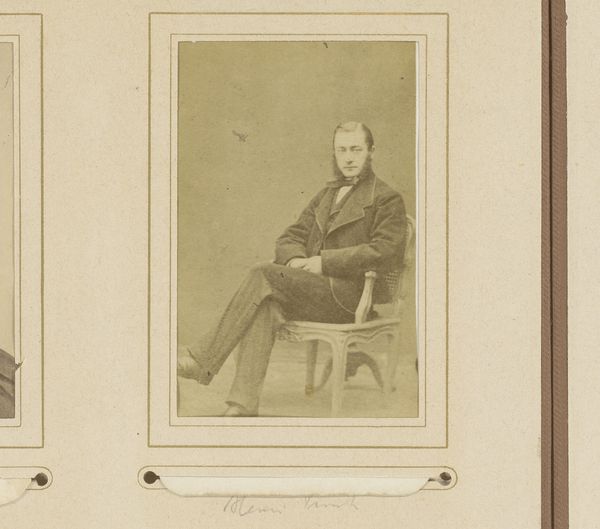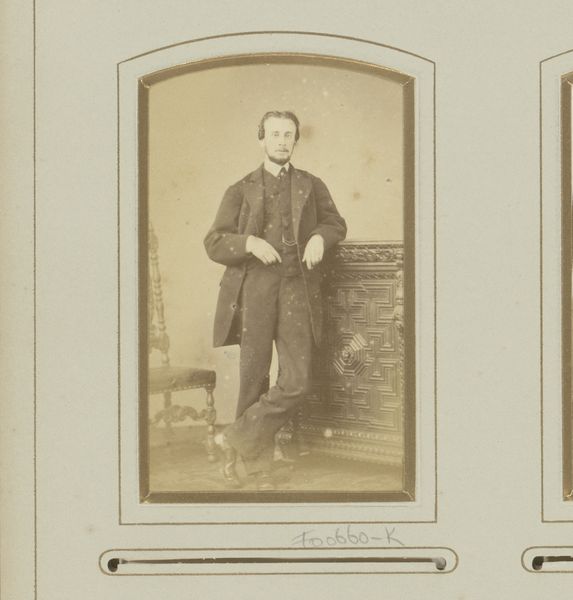
photography
#
portrait
#
photography
Dimensions: height 85 mm, height 52 mm
Copyright: Rijks Museum: Open Domain
Curator: Immediately, I am struck by the man's confident gaze. The textures seem incredibly rich for an early photograph. Editor: That's a fine observation. This portrait of an Indonesian man, seated on a stool, comes to us from the studios of Woodbury & Page. It’s a daguerreotype, placing its creation sometime between 1857 and 1880, an era of burgeoning colonial photography. Curator: Daguerreotypes always hold a certain weight, don’t they? The image seems to emerge from the silvered surface, a visual echo of a past encounter. I read the costume as conveying hybridity, reflecting indigenous designs, colonial tailoring and some subtle signaling that are hard to extract now, given it was photographed under colonial enterprise. Editor: Indeed. Note the patterned cloth draped around his legs – likely a traditional sarong, indicative of his status, as we know patterns were dictated by the position and ethnicity within colonial Java. And how it contrasts with the more Western-style jacket, albeit with Asian slippers. It speaks to complex negotiations of identity during the Dutch East Indies period. It seems he is attempting to represent an appropriation and fusion of Western elements but nonetheless retaining his cultural distinction. Curator: Do you see any symbolism related to the man’s head covering, especially given the context of Indonesian societal structures and potential colonial influences? Editor: Possibly, but its meaning now is not entirely certain. The covering may carry layered significances from indicators of regional background to affiliations to colonial rule. It is something that could benefit from continued study. It is fascinating to note how photography during this period not only documented appearances but also participated in the colonial project of cataloging and, in some ways, controlling the image of the colonized. Curator: I agree, the photograph freezes more than just an image. It preserves, in a sense, power dynamics and complex cultural translations of that era. Editor: Yes. Pondering this work provides insight into cultural heritage and prompts considerations on photographic art’s lasting colonial impact. Curator: Exactly, it encourages looking at history and also scrutinizing the images produced at that time and the role they assumed.
Comments
No comments
Be the first to comment and join the conversation on the ultimate creative platform.
